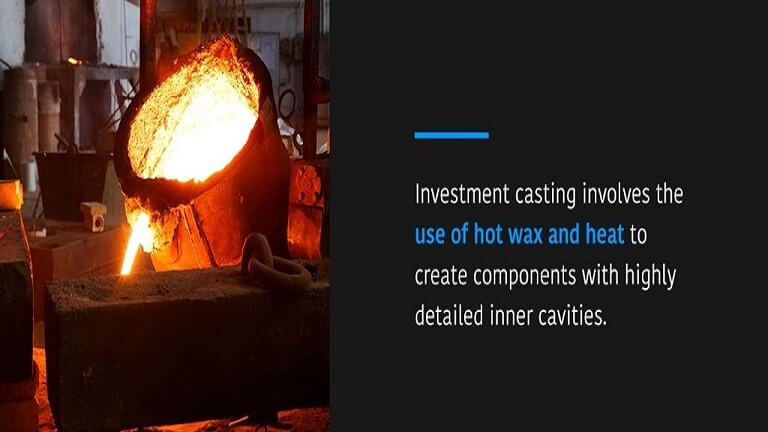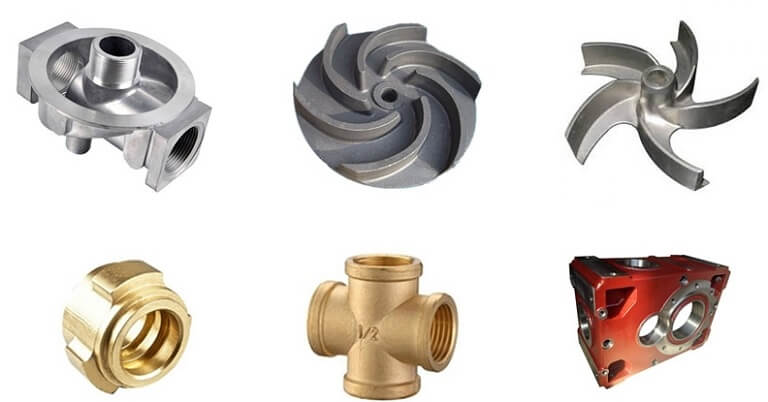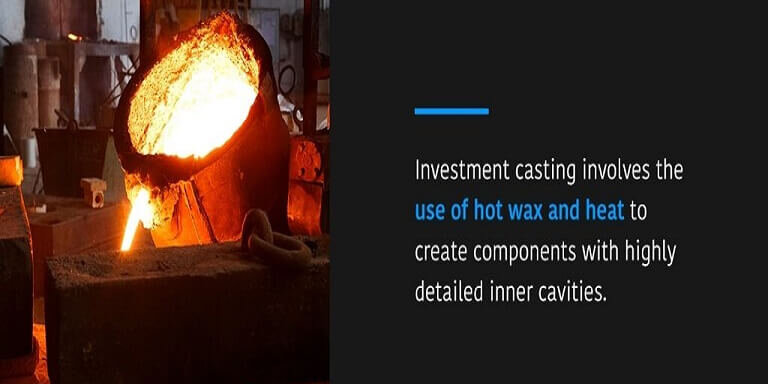Contents
Investment Casting Tolerance

Investment casting, sometimes known as precision casting, is a casting technique in which molds are created using wax patterns with layers of a ceramic slurry. The mold is allowed to cool and dry before heating to remove the wax and obtain the final product. Investment casting is known to produce metal components with complex forms and shapes and precise dimensions with an excellent surface finish. Another attribute is tolerance. Investment casting tolerance standard falls within industry requirements for different applications and materials.
This article is a highlight of various investment casting tolerance characteristics.
What Is Investment Casting Tolerance?
Investment casting tolerance is the range of dimensions that investment casting can meet. Accordingly, it can be considered the dimensional standards you can achieve using investment casting.
Investment casting processes can be categorized under lost foam casting, silica sol casting, and water glass lost wax casting. All these types of investment casting processes have different suitability to a specific application or product design.
What Affects Investment Casting Tolerance?
Many factors affect investment casting tolerances. For instance, the temperature of the wax or silica sol used, the injection pressure, the temperature of the die, the composition of mold or shell and used, the positioning of the tree, and the rate of solidification all affect casting tolerances.
However, the shape and size of the material being manufactured determine the casting tolerance required for every process. Additionally, this factor may vary from one user to the other. This is typically because a manufacturer may focus more on thin-walled products with high complexity while another may specialize in high volume production with high integrity.
Although investment casting tolerance standard exists, it tends to be subjective and varies from one manufacturer to another. Additionally, investment casting equipment may affect the level of tolerance.
Typically, investment casting tolerances can be grouped into linear tolerances and geometric tolerances.
Investment casting linear tolerance applies to features that involve length, holes, straightness, radii, and concentricity. On the other hand, investment casting geometric tolerance applies to features such as roundness, cam profiles, parallelism, and true positioning.
Investment Casting Linear Tolerances
Linear tolerance varies in every investment casting process. For instance, lost wax casting has a range of between CT7 and CT8 linear tolerance, lost foam casting has CT8 to CT9 linear tolerance, while silica sol casting has between CT5 and CT6 linear tolerance.
Typically, standard dimensions have linear tolerances that reflect 20% part prediction and shrinkage, 10% die-maker and tooling, and 70% process variation.
Casting tolerance variation is majorly associated with the part configuration that enables uniform shrinkage and other variations in processes involved with creating wax patterns, ceramic slurry molds, and the actual casting process.
- Premium Linear Tolerances
You can reduce the identified tolerance variations through the following ways:
- Redesigning the part to include gussets, ribs, and bars
- Using additional machining and post processes
- Fine-tuning the wax injection to meet required dimensional standards
You can consistently achieve investment casting premium tolerance capability. However, you have to consider every part and dimension individually.
b. General Linear Tolerances
Most clients tend to be worried about the dimensions on drawings and CAD files. However, these dimensions can be achieved by using general linear tolerance.

Geometric Tolerances
The following applicable features fall under geometric tolerance:
· Flatness
This is the overall accepted deviation for a flat metal component. Any part produced using investment casting should fall between the flattest surface and one that affects the overall accepted deviation.
In most cases, the contraction and shrinkage during cooling and solidification determine the extent of this deviation. However, there is no specific amount of investment casting flatness tolerance since alloys vary.
· Straightness
A part’s straightness is determined by the overall tolerable diameter of its deviation from a straight plane. Straightness tolerance may be a challenge, depending on the type of investment casting and product size.
· Parallelism
The precision of investment casting may only support one end of the plane. It can be a challenge to maintain a perfectly parallel design due to shrinkage during cooling. Additionally, there may be deformations as the part reaches a suitable temperature.
However, you can reduce the deviation by readjusting the design to reduce volumetric shrinkage during cooling. Additionally, you may need post-processes for more accuracy.
· Roundness
What determines roundness is the difference in radius between a true circle and a particular circumference. The best way to test a product for the roundness is by rotating it through 360 degrees or looking at half of the difference between the highest and the lowest conditions.
· Concentricity
You can easily inspect concentricity using two cylindrical planes with a shared axis at the center. The dimensional difference between the positioning of the centers determines the extent of concentricity.
· Hole Tolerance
The investment casting hole tolerance is considered the required roundness in every product with a hollow part. To obtain a perfect fit, you have to ensure the surrounding metal around the hollow part is symmetric.
This feature is essential for all metal components that fit together. The hole tolerance is very critical for parts such as wheel shafts.
Investment Casting Tolerance Capabilities
Investment casting tends to produce metal parts with extreme precision. Precision and configuration are essential when you want to meet industry standards on casting tolerances. You need a team with experience in investment casting to achieve the required tolerance. Accordingly, you have to know that every process has a different casting tolerance, depending on a wide range of factors.
Characteristics of Investment Castings
- 125 RMS surface finish
- Weight averaging 85 lbs
- The maximum dimension should be 24 by 24 inches
The Bottom Line
It is advisable to allow a minimum of .03 inches outside radii since the corner radii tend to reduce stress and enhance part appearance. Additionally, you may want to incorporate various features into a 3D CAD file for the metal component you are producing and not the dimensions. You can tool the feature according to the design. However, you will have to focus more on the assessment time for features that you want.
Investment casting produces metal components of various sizes, complexities, and tolerances. You should consider an investment casting manufacturer with state-of-the-art tools to deliver what you want.

